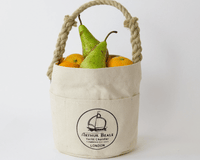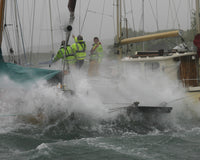As any seasoned sailor will know, packing for a sailing trip can be a challenge because space is very limited on a boat. Here is a rough guide of what you should have on-board plus a few other things that will make your voyage more enjoyable.
This list will vary depending on the size of your boat, how many people are on the trip, the sailing location, the duration of the trip and specific sailing requirements. Always double-check local regulations and weather forecasts to adequately prepare for your sailing adventure.
1.

Life jackets or personal flotation devices (PFDs): safety should always be the top priority when sailing. All passengers must have appropriately fitted life jackets or PFDs and it is recommended that everyone should be wearing a PFD at all times. There should be flares (unexpired) on board.
2.
Travel documents: every crew member must have valid travel documents. The skipper must have a crew list, a valid skipper’s license, details of the insurance company and a radio operator’s license. A waterproof case or bag is useful for keeping important documents safe and dry.
3.

Navigational charts and GPS: carry updated navigational charts for the areas you'll be sailing in, along with a reliable GPS device. These should be kept in a waterproof document holder and the GPS device in a protective container. Fully charged torches will always be useful and waterproof cases for iPhone and iPads will also come in handy.
4.

A well stocked first aid kit is essential: accidents can happen and you may be a long way from shore when they do. Your kit should include bandages, antiseptic wipes, adhesive bandages, sting relief wipes, scissors, pain relievers, seasickness medication and any necessary prescription medications. You can buy first aid kits specifically for sailing trips or you can make your own.
5.

Communication devices: in case of emergencies or unexpected situations, have a VHF radio (mobile phones may not work in every situation) or satellite phone to maintain communication with the shore or other vessels. Satellite communication allows vessels to communicate over longer distances than radio. The skipper must know how to use all communication devices.
6.
Tools and spare parts: carry essential tools such as screwdrivers, pliers, wrenches, and a multi-tool kit for minor repairs. Duct tape is a must for temporarily holding things together and a Swiss Army knife with all its different functions will always come in handy. A seasoned sailor will always have a few spare shackles along with spare parts like fuses, light bulbs, ropes, and extra fuel filters to be prepared for any unforeseen mechanical issues.
7.
Fire extinguishers: you must ensure you have the appropriate number of Coast Guard-approved fire extinguishers on board. The amount of fire extinguishers you must have depends on the size of your boat and there are also specified areas in terms of where they need to be situated. Every crew member should know how to use a fire extinguisher.
8.
Food and water: It's important to have an adequate supply of non-perishable food items that require little to no cooking, as well as clean drinking water. Our CEO Hugh was stuck, due to bad weather, in a remote port in Sweden where there were no shops or restaurants. Hugh and his crew were obliged to eat tinned sausages for 3 days. Consider bringing a variety of extra supplies of non-perishable food in case of unforeseen circumstances or emergencies.
9.

Sun protection: on a boat with the wind blowing through your hair it’s easy to think you can’t get sun burn but being out on the water exposes you to intense sun rays. Make sure you pack ample amounts of sunscreen, hats, sunglasses, and clothing with UV protection to shield yourself from harmful UV radiation.
10.

Rain gear and warm clothing: weather conditions can change quickly while sailing, so it's wise to pack waterproof jackets, trousers, and boots. Also, bring warm clothing layers for cooler temperatures or potential night sailing. Suitcases are not suitable for boats so use a duffel bag or dry bag to store your clothes. Non slip (non-marking) shoes are a must. Ideally all your clothes should fit into one bag so choose quality rather than quantity.
11.
Anchors and lines: carrying several anchors and appropriate lines of different lengths and strengths is essential for secure anchoring, particularly in remote or unfamiliar areas. Fingerless sailing gloves are useful for working with small ropes and shackles but long fingered gloves offer more protection from blisters and rope burn.
12.
Boating license and identification documents: ensure you have your boating license or any required permits with you. Carry identification documents such as passports and boat ownership papers, as they may be needed for various purposes, including customs and entry to certain ports. It’s also a good idea to have some foreign currency for places where you won’t be able to use a card.
13.
Personal items: don’t forget to pack personal items such as any medication, quick-dry towels, toiletries, sunscreen, insect repellent and aftersun but remember that space will be very limited in the bathroom so using smaller containers is advisable. A pair of crocks or flip flops is useful for trips to the bathroom at night and earplugs will block out any snoring or engine noise when night sailing.





